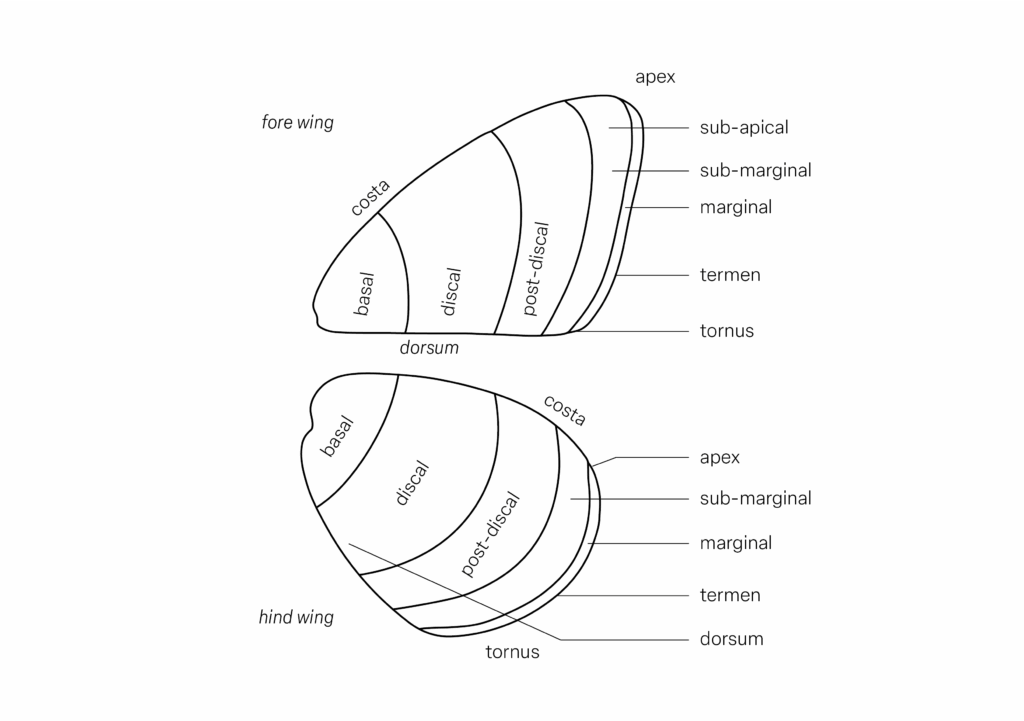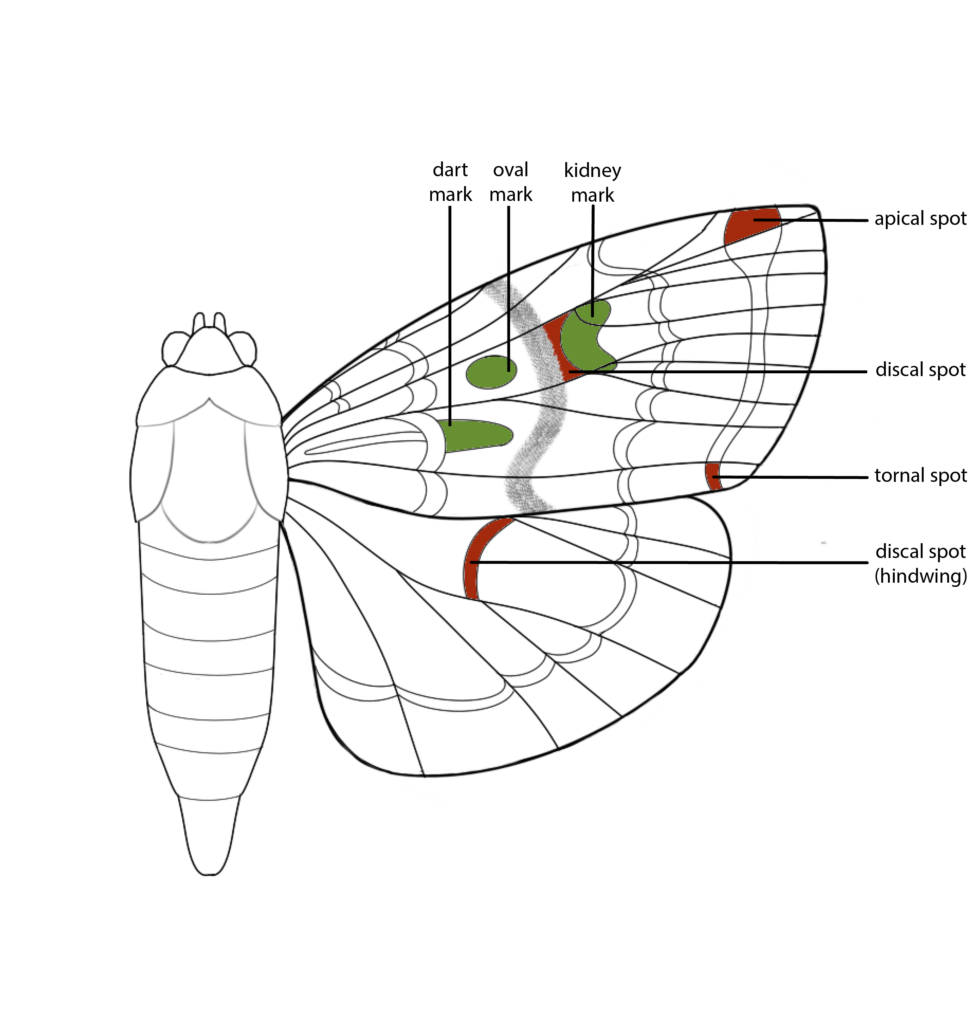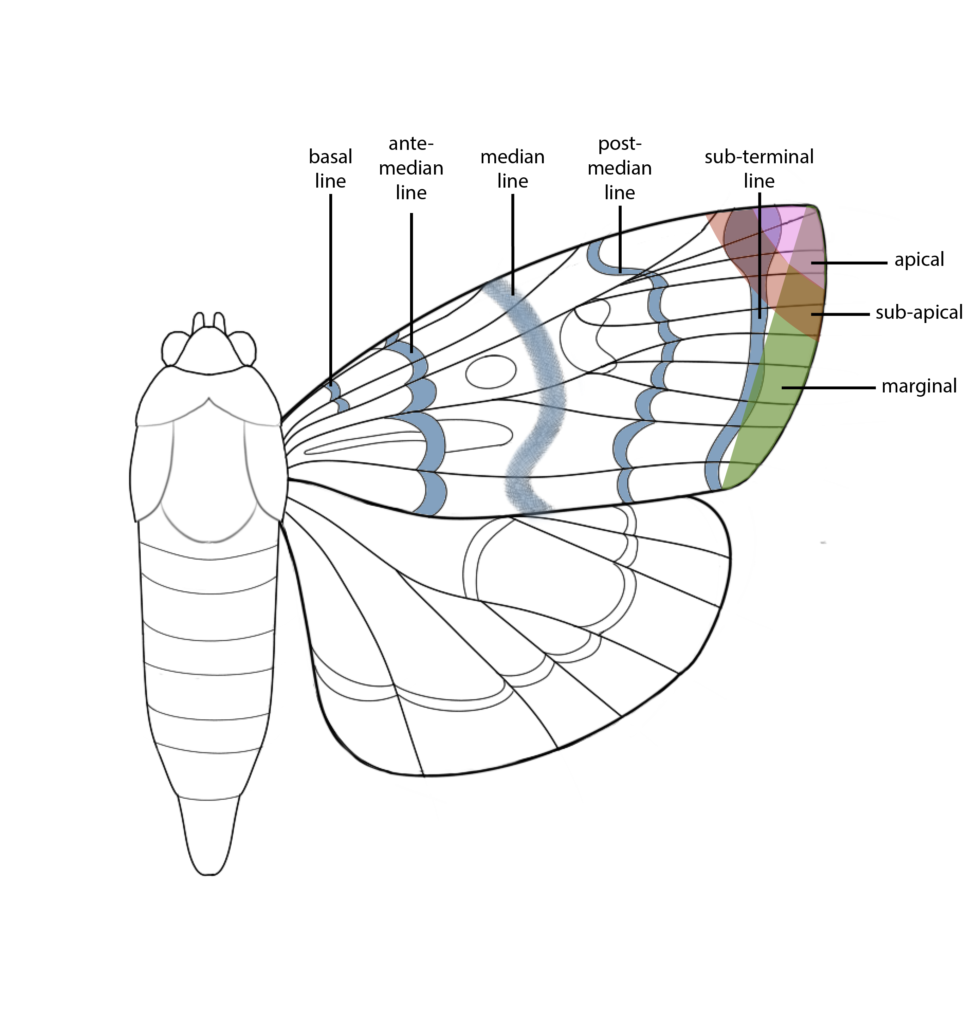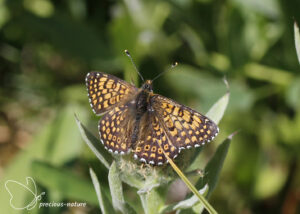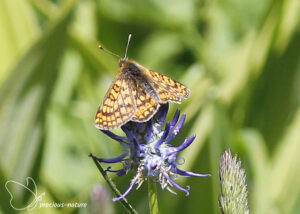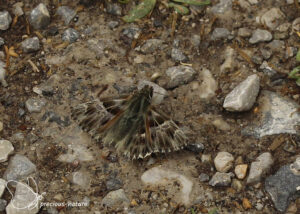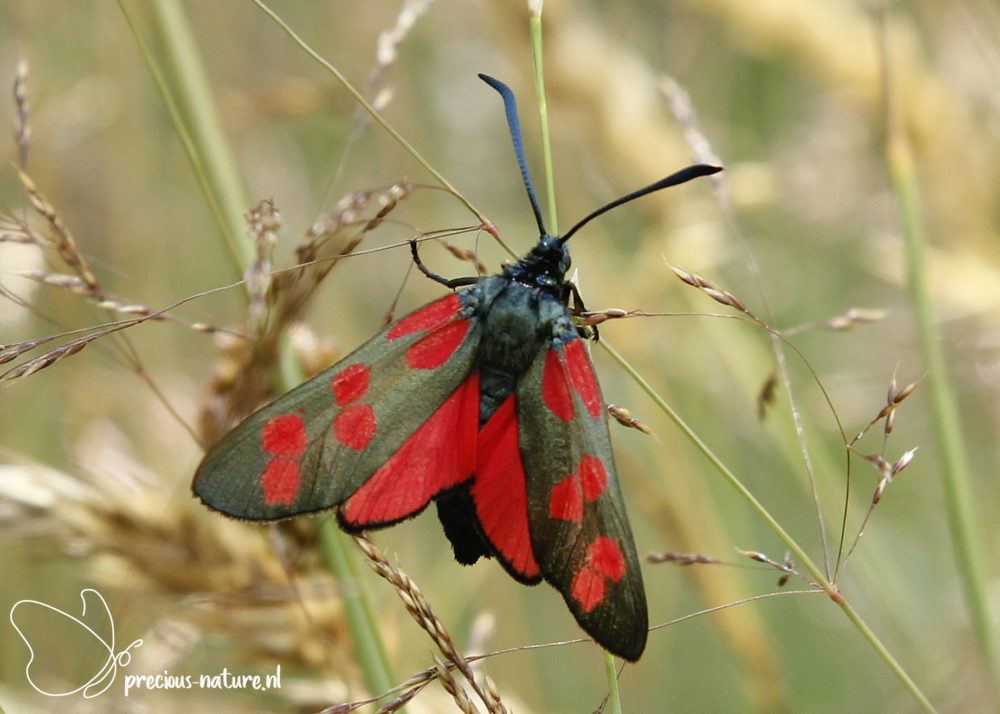Butterflies belong to the order Lepidoptera. After the beetles, the butterflies form the most significant number of species. No fewer than 160,000 different species of butterflies have been described. Europe is a considerable region where a large number of species have their distribution. Unfortunately, by building cities, intensifying agriculture and industry, and thereby causing changes in the climate, people are a significant contributor to the rapid decline in the number of species. Where are those roadsides with a variety of flowering plants? But those with an eye for it can still enjoy various butterfly species. Let’s keep it that way and be careful with this beautiful fauna.
The structural and wing characteristics of moths and butterflies are essentially the same, but there are some key differences. Figures 1 and 2 (click on the figure to enlarge) identify the key terms commonly used to describe the basic characteristics of moths and butterflies.
- Figure 1 – Butterfly
- Figure 2 – Moth
The body of a moth (or butterfly) consists of three distinct parts: the head, the thorax, and the abdomen. The head contains the main organs for sensory processing and food intake, the thorax is focused on locomotion, and the abdomen is responsible for digestion, secretion, and reproduction.
The antennae on the relatively small and round head are primarily used for sensing scents, as well as for navigation and maintaining balance during flight. In most moths, the antennae are thin and tapered. Some, especially in males, have numerous branches, giving them a feather-like appearance. Butterflies have a knob or thickening at the end of their antennae.
A butterfly’s eye, which is suitable for detecting movement but not clear images, is larger than that of a moth. Unlike human eyes, a butterfly’s eye consists of several smaller “eyes,” each with its lens. Each smaller eye is positioned in a slightly different direction, allowing the butterfly’s brain to create a composite image of its surroundings. This will enable them to see above, below, in front of, and behind themselves simultaneously. A moth’s eye is less light-sensitive but can detect UV light. That’s why they also like to fly towards them in the dark. Light in the wavelength range of 360-410 nm (UVA) appears to be the best for attracting moths. Therefore, I now use a moth trap with an LED strip that emits light with a wavelength of 370 nm. Furthermore, the ability to see UV light, which humans cannot, helps identify flowers and other butterflies that exhibit characteristics visible only under UV light.
Besides the body parts that sense scents and the environment, the tongue plays a crucial role in the intake of food. In butterflies, the proboscis is often clearly visible. In moths, the proboscis is only visible in a few species, such as the Humming-bird Hawk-moth and the Broad-bordered Bee Hawk-moth. The proboscis consists of a thin tube that allows food to be sucked up. The proboscis has hairs with scent receptors that help recognise scents and thus food.
The wings, fore wing, and hind wing, like the legs, are attached to the thorax. Several veins and cells can be observed on a wing. In butterflies, the presence of spots and possibly the colour in a specific area is often essential for identification. Therefore, the description frequently refers to veins and cells in the wing, accompanied by a number. Figures 3 and 4 (click on the figure to enlarge) show the specifications of these references.
- Figure 3 – Wing areas
- Figure 4 – Cells and veins
For moths, several other characteristics can be crucial in identifying a species. For owls, for example, the so-called “owl spots” — the ring spot and the kidney spot — are key to identification. Figures 5 and 6 (click on the figure to enlarge) list several characteristics used in the moth world.
- Figure 5 – Specific markings
- Figure 6 – Specific lines
A butterfly is flying by moving the muscles that connect the wings to the thorax and rhythmically moving the thorax. The front wings are usually larger and sturdier than the rear wings. In particular, with some moths, the difference is very large. In that case, the frequency of the wing beat is also much higher than that of the slowly fluttering butterflies. The wings are covered with scales that overlap each other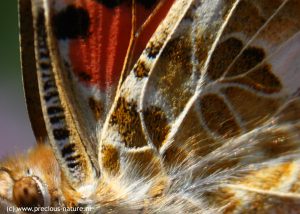 like roof tiles. Each scale has more or less the shape of a tennis racket, with its stem in an opening attached to the wing membrane. When I was young, I was told that if you grab a butterfly by its wings, the ‘flying dust’ would fly off, and it would no longer be able to fly. Actually, they are scales so small that they appear like dust. The scales contain pigments that are responsible for the colour of the butterfly. Additionally, there are butterflies with scales filled with air. As soon as the sun shines on the scales, the light on the interface of the scale and air is refracted, and by scattering, you get different colours. Depending on the thickness of the air chambers, you get other reflected colours, which we then see as the colour of the wing. Besides the normal scales, scent scales are present over the entire wing. This allows a male to attract a female during the courtship ritual by excreting stimulating fragrances.
like roof tiles. Each scale has more or less the shape of a tennis racket, with its stem in an opening attached to the wing membrane. When I was young, I was told that if you grab a butterfly by its wings, the ‘flying dust’ would fly off, and it would no longer be able to fly. Actually, they are scales so small that they appear like dust. The scales contain pigments that are responsible for the colour of the butterfly. Additionally, there are butterflies with scales filled with air. As soon as the sun shines on the scales, the light on the interface of the scale and air is refracted, and by scattering, you get different colours. Depending on the thickness of the air chambers, you get other reflected colours, which we then see as the colour of the wing. Besides the normal scales, scent scales are present over the entire wing. This allows a male to attract a female during the courtship ritual by excreting stimulating fragrances.
A butterfly has six legs that it uses for walking or hanging. With butterflies, the legs are not only used for walking, but they are also used to taste food. In the Nymphalidae, the front legs are much smaller than the others, so it seems that only four legs are present. A track on the front leg is provided with a brush. This allows the butterfly to clean its antennae. In males, many types of scales on the legs disperse pheromones to attract a female.
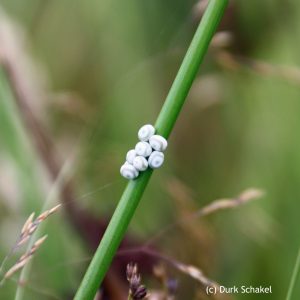
Eggs Drinker Moth on a grass
The abdomen is much softer than the head and chest. The male has a pair of pincers at the end, allowing the female to be held during mating. The females have a few glands at the end of the abdomen with which they can excrete attractants and pheromones, which can only attract males of their own kind. With their highly developed antennae containing many odour-sensitive cells, males can detect these attractants. When the two are attracted to each other, mating occurs, which can last up to an hour. The actual fertilisation of the eggs only takes place when they are actually deposited on a host plant using an adhesive. Each butterfly has one (monophagous) or more (polyphagous) specific host plants, such as grasses, flowers, or even bark crevices. At plants, a female sits on the leaf and bends her abdomen around the leaf to deposit the eggs in a place where it is protected from the sun and possible enemies. The eggs grow into caterpillars that moult at the end of the larval stage into a pupa from which the final butterfly hatches.
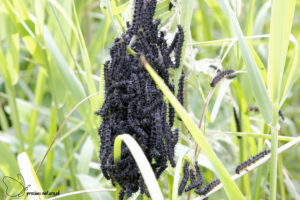
A bunch of caterpillars of the Peacock Butterfly on their host plant



